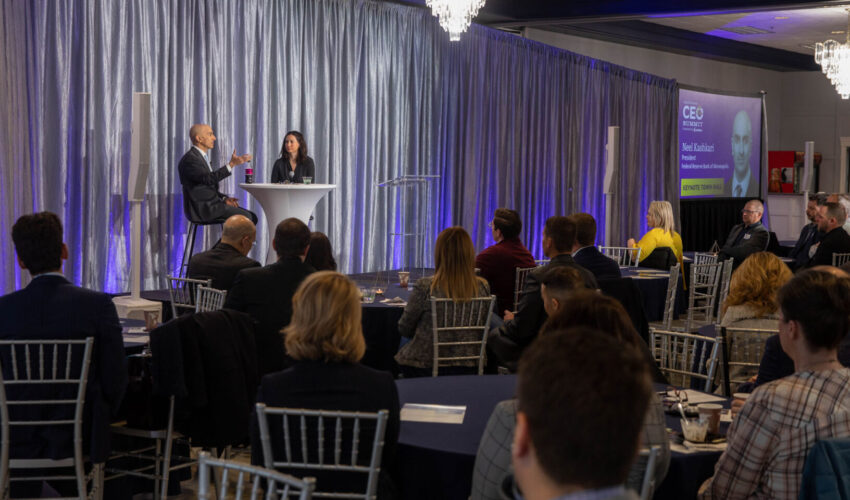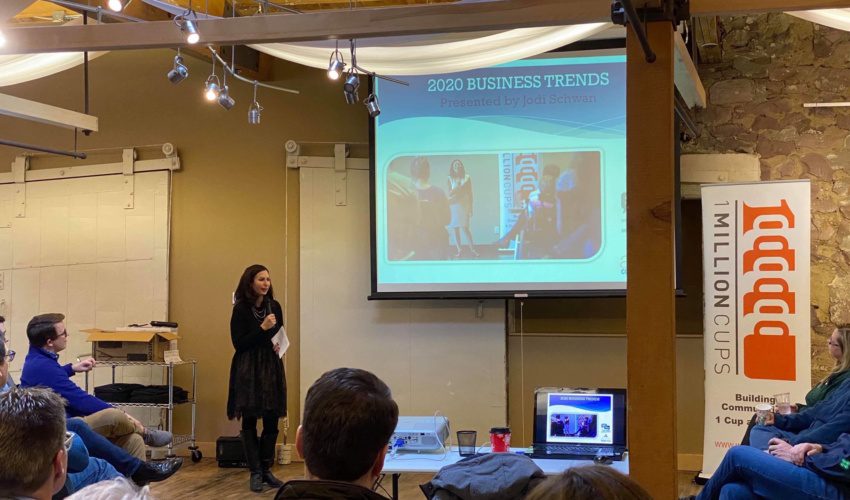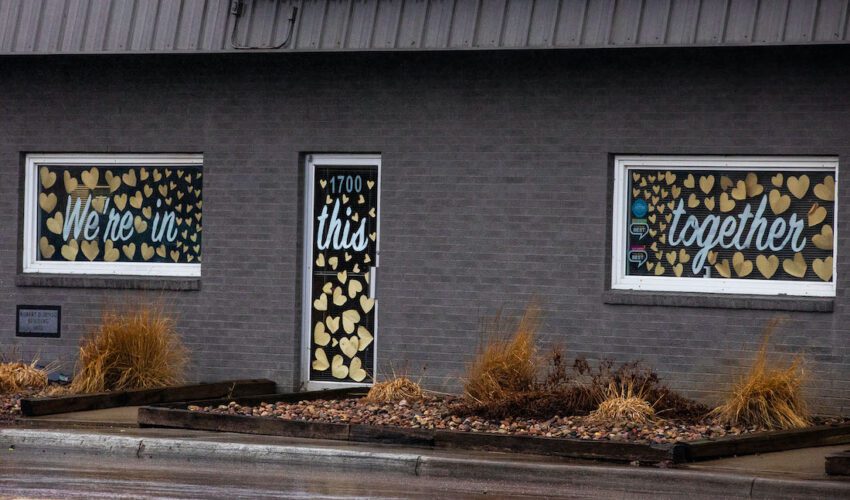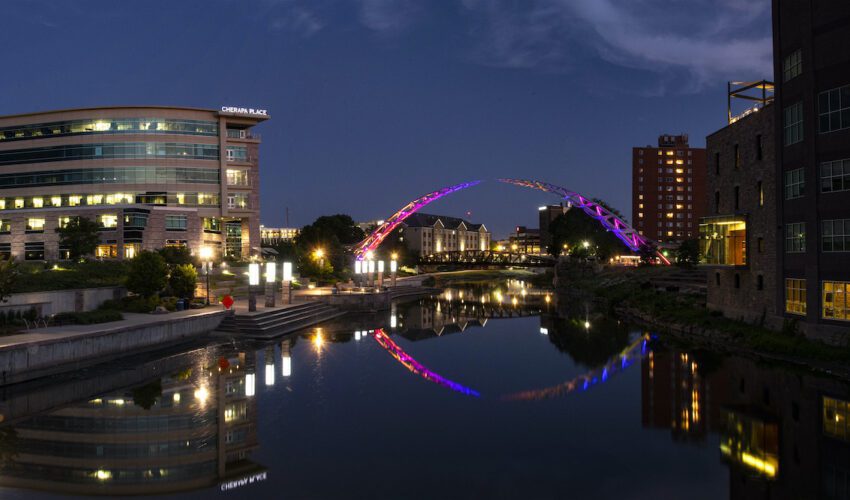Jodi’s Journal: The town of 200,000
Photo by Paul Schiller
Aug. 15, 2021
The latest population estimate for Sioux Falls came out last week – and I am confident in telling you it’s already outdated.
The U.S. Census Bureau reported a 2020 population of 192,517, which is up 25 percent from a decade ago.
But I guarantee it has grown more since then as I look at the demand for housing, both apartments and single-family homes.
This is an unbelievable time in this city’s history.
Case in point: I’m starting this column at 7 p.m. on a Friday because this week has been so packed with news, business development and other business-related obligations that I have not had time to sit down and gather my thoughts on all of it until now.
We have experienced records in the housing market, from home sales to an essentially at-capacity apartment market.
The valuation of building activity so far this year exceeds $600 million, blowing away past year-to-date records without one single large project driving the total.
Our tourism market was the fastest in the nation to recover.
We have more people who want to live here than we have homes, in some cases.
We have more businesses that want to locate here than we have space or employees, in other cases.
So I have no problem suggesting our population is not 192,000 but greater than 200,000.
A town of 200,000.
OK, a city. But I write for the ear and enjoy alliteration.
I remember when I first discovered Sioux Falls, right around the time of the 2000 census, which reported a population of just under 125,000. I think I rounded up when telling people about it.
And in many ways, many of the qualities I liked about this city are still alive and well. People go out of their way to help you out. They’ll call me back. They’ll take the meeting. They’ll let me merge in traffic when needed. There’s still not that much traffic.
It seems an especially appropriate time to reflect on the growth of the community, given it also was the week we reported an unprecedented infusion of funding that will continue to propel Sioux Falls forward.
The “One Sioux Falls” plan, as it’s called, is an incredibly rare, $50 million-plus boost to city spending, thanks to pandemic-related funds and better-than-expected city revenue.
There are investments in everything from housing to park projects and public safety-related programs to infrastructure.
It’s not the exact plan I would have put together given access to such funding.
But would I vote for it if given the opportunity? Absolutely. Because what it represents is even rarer than the extra money itself: the result of listening, collaboration and cooperation.
Our city’s elected officials arrived at this plan through soliciting extensive input, deliberation and compromise. That’s how I think the — sometimes silent — majority want our leaders to act.
And that’s how our collective community must lead as we continue to grow and diversify.
I’ve referenced this article I read several years ago in the Harvard Business Review before, but I thought of it again as I contemplated the forces that set the direction for this community.
It’s about the difference between “old power” and “new power” and how it will guide our societies, economies and businesses in the years ahead.
“Old power works like a currency,” the authors wrote. “It is held by few. Once gained, it is jealously guarded, and the powerful have a substantial store of it to spend. It is closed, inaccessible and leader-driven. It downloads, and it captures.”
“New power operates differently, like a current,” they continued. “It is made by many. It is open, participatory and peer-driven. It uploads, and it distributes. Like water or electricity, it’s most forceful when it surges. The goal with new power is not to hoard it but to channel it.”
I thought about that as I moderated a panel for a near-capacity room of young professionals at last week’s Young Professionals Network Crossroads Summit.
“Crossroads” somehow seemed an especially appropriate name given the context.
Think about business-related organizations and service clubs. In many communities, and in some cases in this one, they’re struggling to be relevant to a new generation. I’ve been asked many times speaking to such groups what they can do to increase membership.
YPN doesn’t have seem to have that problem. Its membership appears robust, and there are multiple ways to connect to the organization how and when members choose. I’ve always felt that if I sent leadership my input, it would be listened to and respectfully considered.
But YPN has embraced the concept of new power.
How about your business? Or your industry organization? Or your church? Or your nonprofit?
The “crossroads” between leading with old and new power is going to feel uncomfortable at times.
But growing up, as this community is, is uncomfortable. Anyone else remember middle school?
As a — fairly young, right? — woman in this community, I feel like I can speak my mind in any setting in Sioux Falls. I’m self-aware enough, however, to know my input might not always receive the same degree of weight in some settings as those who carry a slightly different demographic profile.
In many cases, the ones who still make most of the big decisions in this community and its businesses and organizations, let’s be honest, don’t look like I do. And they don’t look like or have the same life experience as the 25 percent who make up the newest members of the Sioux Falls population.
But if you are in leadership today and you don’t take into account the growing force of “new power,” you eventually are going to lose power. You will lose it in the form of followers: employees, members, voters, you name it.
“The battle and the balancing between old and new power will be a defining feature of society and business in the coming years,” the article predicted a few years ago.
“A common assumption is emerging: We all have an inalienable right to participate. For earlier generations, participation might have meant only the right to vote in elections every few years or maybe to join a union or religious community. Today, people increasingly expect to actively shape or create many aspects of their lives.”
That includes shaping their city, which is why the open and collaborative nature of the “One Sioux Falls” funding approach struck me as so on point.
The 200,000 residents who make up this not-so-small town represent more diversity than we have ever experienced. Deconcentrating power at all levels is what it will take to optimize that. And ultimately, that’s how the strongest leaders, organizations and communities will be revealed.
City details plans for $50M+ in added projects, programs thanks to extra funds









